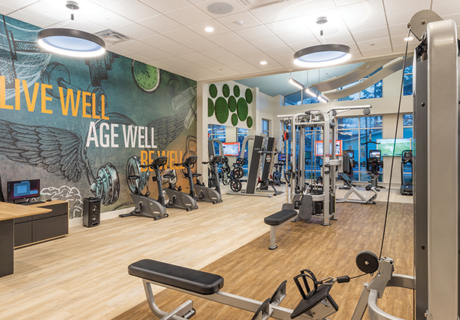EFA Expo Keynote Panel: Searching For The Senior Living Model Of The Future
Whether its baby boomers demanding new models of senior living, the need for more affordable housing options, or regulatory changes that influence where people can live, the search for the newest and better senior living model of the future is underway.
“I see the right housing as not a place to hang your hat or get better but a place that will keep you well,” said Ryan Frederick, founder and principal of Point Forward Solutions, and founder and CEO of Smart Living 360.
Frederick joined panelists Gail Kohn, coordinator for Age-Friendly DC, and Sandra Harris, a principal at S. Harris Interiors and founding member of Boston Society of Architects/AIA Designing for Aging (DFA) committee, to share ideas on how the industry might get there during a keynote panel discussion at the 2016 Environments For Aging Expo & Conference in Austin, April 9-12.
Frederick challenged the audience of operators, designers, architects, and industry professionals to use the conference to create a platform to take the next step. “We need to mobilize our networks and show what’s possible and why it’s important,” he said.
For example, Frederick, who temporarily moved into a retirement community at age 29 to get first-hand experience in senior living, says a new era of longevity and active lifestyles is demanding new housing options that are fundamentally different from traditional models that relocate seniors from their neighborhood or “Main Street” area to more isolated communities where they can lose their sense of autonomy.
Frederick, on the other hand, envisions a new Main Street that puts senior living, retail and healthcare services, and opportunities for interaction together in an accessible area. “Why not put people where the action is,” he said. One way to help facilitate this idea, he said, is to get policy makers to see how more integrated and connected communities can keep seniors and other populations healthier. “The right community should enrich your well-being,” he said.
One city on the path to change is Boston, which began addressing the issue as part of the World Health Organization’s Global Age-Friendly Cities project and following the election of Boston mayor Marty Walsh, who is committed to improving senior living in the city, Harris said. As part of the project, Boston will release its first master plan in 50 years, which will include ideas on improving housing options for seniors. “People want to stay in their homes and in their neighborhoods,” Harris said.
DFA is helping shape the conversation and “add a face to the issue” by hosting listening sessions with residents to learn their stories and needs, as well as serving as a resource for city departments, such as housing, parks and recreation, or transportation committees, to make sure they account for seniors in their policies and planning. “We’re making sure it’s on their radar,” she said.
Farther down the east coast, Kohn is also advocating for change as part of Age-Friendly DC, which joined the network in 2012. “It’s been a journey,” Kohn said. The city’s strategic plan includes 18 goals, including streamlining, expanding, and promoting programs that support affordable housing and aging in place. “We have a community that wants to age in place,” Kohn said. “We want to make that possible for them to do.”
To get the city to increase the amount of housing that’s accessible, affordable, and healthy, Kohn said smaller assisted living communities could be located within existing neighborhoods where seniors live so that their friends and support networks can stay in touch and be more accessible.
While each of the panelists’ ideas for changing the face of senior housing are in different stages of development, they recognize that they face some common challenges, including getting buy-in from local governments and promoting policy changes to support new models. “Someone needs to stand up and talk about it,” Kohn said. “Get the major to focus on this.” Affordability is another challenge and Frederick suggested looking for ways to unleash the private market to get them to “build what we need.”
“We have a different consumer who’s ‘moving the cheese,’” Harris said, “and we need to move with it.”




